Article's Content
Social media is a powerful weapon when it comes to helping marketers and salespeople connect with prospects, leads and customers.
Given that social media is so connected these days, it offers you a way to reach your audience no matter where they spend their time.
And in the world of social media, the word ‘engagement’ gets mentioned a lot, but few brands know how to reach it.
What is social media engagement?
Put simply, social media engagement is when an individual interacts with your brand’s social media account. And it can come in many different ways:
- Likes
- Follows
- Shares
- Comments
- Retweets
- Click-throughs
80% of social marketers say that their primary strategy is to increase engagement across social channels.
Social media engagement can help strengthen your customer relationships too.
When a customer engages with you on social media, it allows you to understand them better and build a relationship with them. Answer their questions, respond when appropriate and go out of the way to provide exceptional service.
And they want to talk to real people on social media, not robots that send automated message after automated message.
Engaging through a two-way process lets others know there is an actual human behind the account and this can make an impact on the trust others have for your business and brand name.
But here’s the thing far too many marketers don’t understand:
Social media engagement is far more than just likes.
There are many ways that communicating and engaging with your audience online can help your company.
Pssst… want to jump ahead? Here’s a TL;DR:
- Post Interesting Content
- Create Emotional Headlines to Boost Shares and Click-throughs
- Use Emojis
- Incorporate Images into Your Posts
- Increase Posting Frequency
- Use Humor
- Curate Others’ Content
- Use Hashtags
- Use Memes and GIFs
- Respond to All Comments
1. Post Interesting Content
This seems like a no brainer, yet it’s forgotten all too often.
There are no excuses: the most shareable content is typically high-quality content.
If you focus on boring topics and don’t put in enough energy and time into research or content creation, you cannot expect others to become engaged.
Content comes in all shapes, sizes, and topics. The best content is exciting and informative. And it can be easy to look at others’ work and judge it. But it can be another thing to have to create your own work. Tools like an infographic maker or flipbook maker are great.
Before creating or even sharing content, think about your audience. Think about demographics like location, age, and interests.
Ask yourself if it’s something you’d want to see and share. Once you have generated post ideas, you can ask your audience to generate comments. This allows for engagement but can give insight into what content they want to see.

Choose to share content that will get positive reactions. Is your content about something funny, inspiring or relatable?
In marketing, we talk a lot about driving emotions to get others to click, convert and engage. Constantly ask yourself whether the content you’re developing makes you feel something and is worth sharing. If it’s not, some editing and re-configuring might be in order.
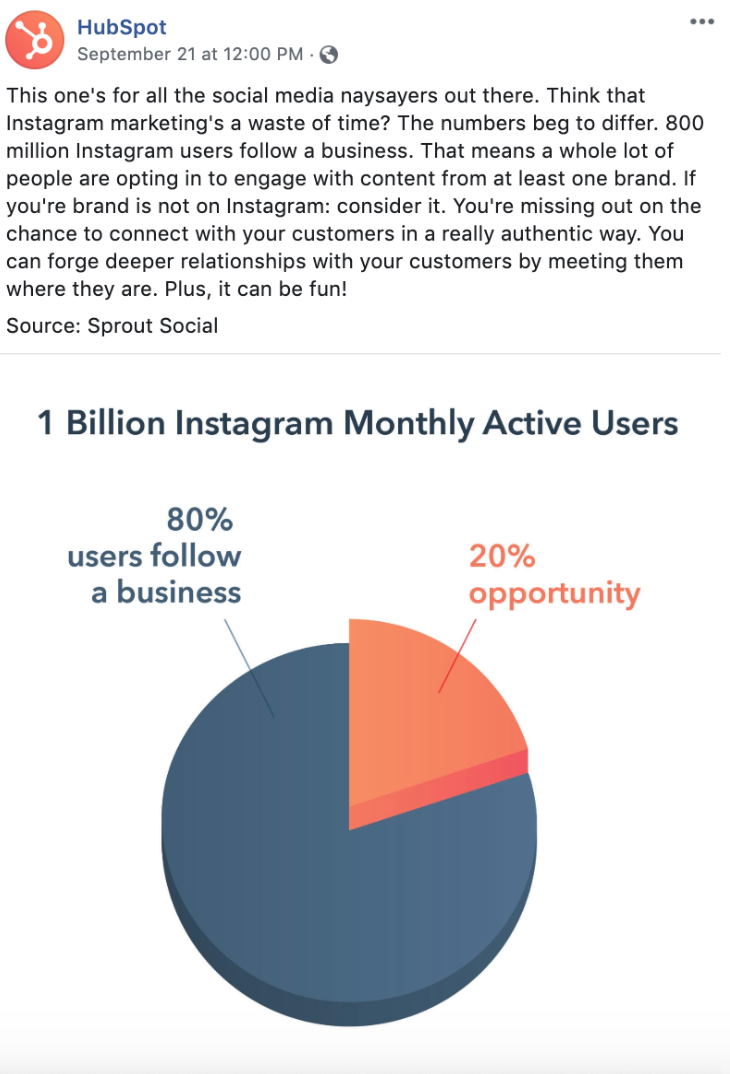
Above all, the content you provide to your prospects and customers should have value. This value could be making them happy or it could be steps to help them improve. And it’s human nature to share what might be beneficial to others.
2. Create Emotional Headlines to Boost Shares and Click-throughs
Are your headlines performing well? Do you want to write stronger headlines? The headline you use will determine whether or not somebody reads your post, subscribes or buys your product. That’s why you need to put the effort into crafting headlines.
No matter how great and awesome the content you write is, none of it will matter if you do not have a good headline.
In fact, eight out of ten people will only read the headline.
It just shows that great marketing will stand out if you have a captivating headline. But also emphasizes the importance of the headlines we choose for our content. And we know headlines have the power to affect readers, even if they don’t read more of the article.
You know that classic saying, “don’t judge a book by its cover?” Let’s be real; we have all looked at the cover of a book and decided if we wanted to actually open the cover and read through it. This same philosophy can be applied to headlines.
If you don’t have a headline that gives you an overview of the content you’ve shared, no one will want to read it or click-through.
When you are brainstorming a headline, you want to consider your audience. Ask yourself, “would I click on that article with that headline?” If you answered no, you need to re-think your strategy and begin creating better headlines. This is especially important for platforms where you can’t add a link within posts, like Instagram for example. If you want people to go to your profile and click on your link in the bio, your headline has to be compelling.
A great headline goes straight to the point of your content. Don’t try to be intriguing or smart. Clear headlines don’t mess around with words, so get right to the point.

Use adjectives like useful, shaking up, valuable, brilliant, mind-blowing and essential. These words can grab your readers’ attention and persuade them to click through and read on.
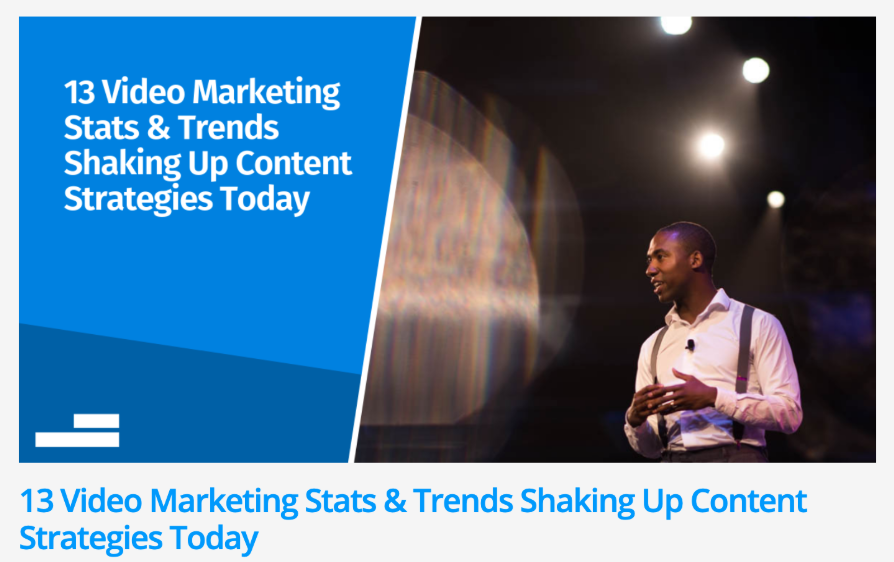
One thing to keep in mind is to do everything slowly. Because if you take the above steps too fast, you might not see the success you want.
And, with practice, you should find that you’re able to write headlines that will start helping you increase engagement.
3. Use Emojis
They are everywhere these days. Our obsession started with texting and has gravitated towards social media and even email.
I am talking about emojis.

Let me repeat: they are everywhere these days. In fact, there are 6 billion being used each day both in and out of social media.
And, in 2020, they are hard to ignore. They are present in every form of communication. From texting to social media. Did you know that 92% of Internet users are using emojis?
When looking at an emoji, our brain can behave in the same way as when they look at an actual human. Your mind views emojis as similar to the human face, which is why using emojis causes stronger reactions than text.
Facebook posts that have emojis can get 57% more likes and 33% more comments and shares than those without them, whereas Tweets with emojis have a 25% higher engagement rate.
57% of Instagram profiles are using at least one emoji in their posts, according to a study conducted by Quintly.
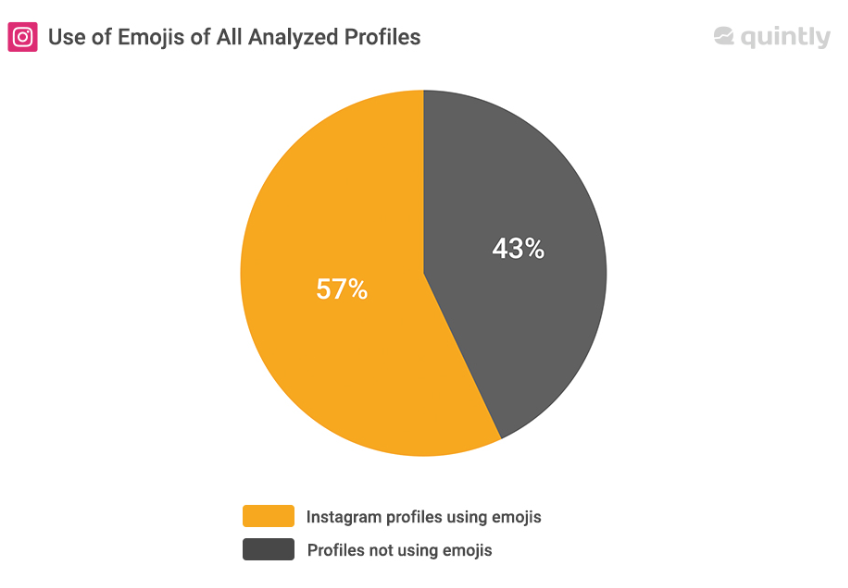
If emojis can boost the potential of engagement, there’s no doubt you should be taking advantage of them. Plus, you can now use an AI emoji maker to make custom emojis applicable to your brand.
However, one of the biggest problems a brand can make on social media, when using an emoji, is misusing them. For example, don’t put a “peach” on a branded Instagram unless you know what you’re doing.
You want to present yourself and your brand as an expert. Don’t put your reputation at risk by posting an emoji that doesn’t mean what you think it might. So make sure you keep up-to-date on the latest emojis and what they mean. By incorporating emojis, you get closer to your audience. Emojis allow you as a business to show the human side and engage with others on a personal level.
4. Incorporate Images into Your Posts
Despite the popularity of social media, many brands are still struggling to produce leads.
If you put your energy into producing and executing well-crafted visuals, users will start recognizing you as a valuable source!
One study found that images can lead to an 85% interaction on Facebook.
Though when used, visuals can complement and enhance your content, catch the interest of new readers and boost your chances of being found organically.

And they’re better at putting a message across than text.
The correct image can give a strong introduction to the topic you cover in a social media post, allowing your audience to relate to it before reading what it’s about.
With the busy lives many are living, it’s difficult to capture and retain somebody’s attention span. Likewise, we need all the help we can get to ensure others are paying attention and consume the content we create.
If a picture is worth a thousand words, then having a useful photo resource and tools like a photo editor or collage maker on hand is vital for any B2B marketer.
However, marketers should be cautious not to infringe on anybody’s copyright. So, you have to respect the work and the rights of others. If not, it could come back and haunt you.
One way to prevent this is to take advantage of a free stock photo website. Websites like Unsplash, Pexels, Freepik, and Gratisography allow B2B marketers to collect images from photographers who have allowed permission for anybody to use them.
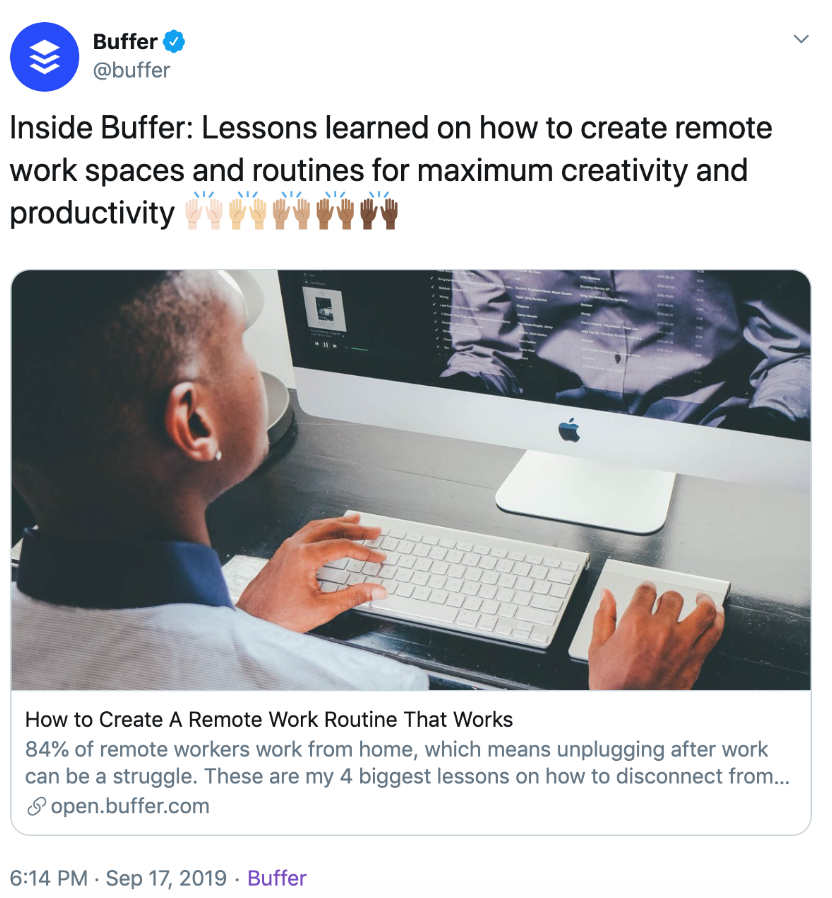
Using images or infographics on social media will allow you to gain attention, build loyalty and increase engagement. If you are interested in standing out, create a visual brand identity as you would prepare a business plan.
When you are consistent and incorporate images with your marketing messages, your brand will get more engagement. You can make use of an Instagram feed planner to preview your posts to ensure that it is cohesive with the rest of your profile.
5. Increase Posting Frequency
Since it’s 2020, you can leave behind all your thoughts about how often you should be posting on social media
Instead, it’s key to focus on quality over quantity! You could post 50 times a day, but if the content shared does not connect with the audience, and they’re not engaging, the posts will become forgotten.

Remember that social media is about knowing your audience, tailoring your content to them and getting them to engage. It takes effort and time, but it will be worth it in the end.
However, you do not want to be in everybody’s faces all the time. Or be a ghost, either. There is nothing worse than going to a social media page and seeing a recent post from 2018.
So, it’s key to stay on top of posting, because an outdated profile will make others question your authority and brand.
And you do not have to pay attention to every social media platform available. Find one that your audience is on the most and grow from there.
One way to do this is to look at other brands in your industry. If they are on a specific platform, and getting lots of engagement, you know where you should be.
Whether you post daily or more than twice, keep the posting schedule consistent, so your audience can depend on content. If you cannot keep up the pace, try using a free social media scheduler like Buffer, to keep you in-line and on-track.
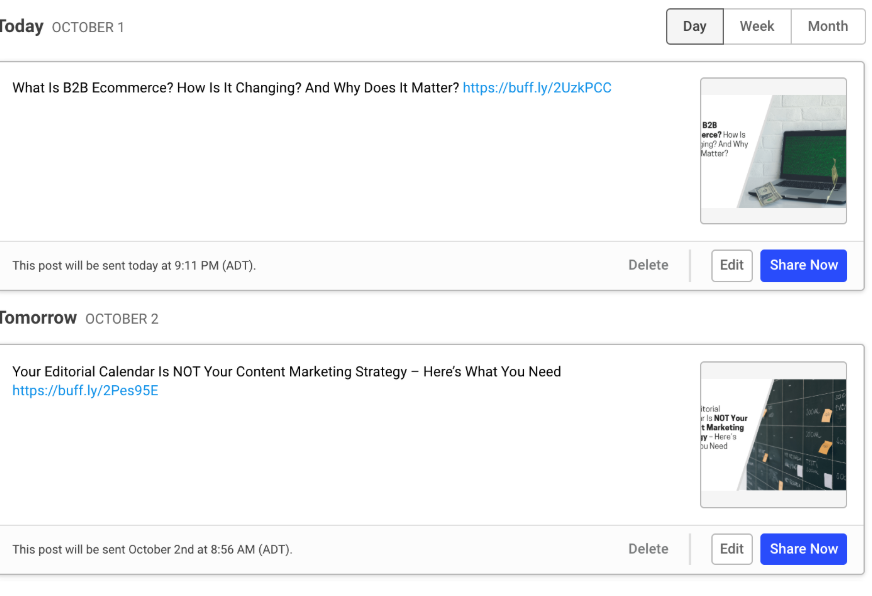
6. Use Humor
Can you remember something hilarious? Humor can go a long way with social media.
But many brands are skeptics about using it.
Zendesk is one of the B2B brands that has done it well. Their marketing team uses humor to boost their message and make their posts stand out.

Adding humor to social media can be an excellent way to get somebody’s attention! If you appeal to your audience emotionally, you will have a stronger chance to engage your brand, service and product further.
Doing this will help your prospects and customers remember you, share your content and have a stronger understanding of you. And an emotional appeal can distinguish you from other businesses on social media with nothing but self-promotion!
Laughter is also social. Did you know we laugh 30 times more when we are with others than alone, according to Robert R. Provine from the University of Maryland, Baltimore County.
If you can get your social media followers to laugh, you will be helping to create a sense of belonging and building connections with others!

We all know that humor can be a strong tool.
But have you noticed that more B2B brands are jumping on the humor train?
Slack, MailChimp and ZenDesk are the few that come to mind.
For example, in 2015, Slack had launched a campaign called, Euphoria, in Minneapolis, Charlotte, Milwaukee, and Cleveland through web banners, print ads, out-of-home advertising, and automotive wraps. With this campaign, they found that users could experience a 32 percent increase in team productivity and a 25 percent reduction in meetings, according to an article on LinkedIn.
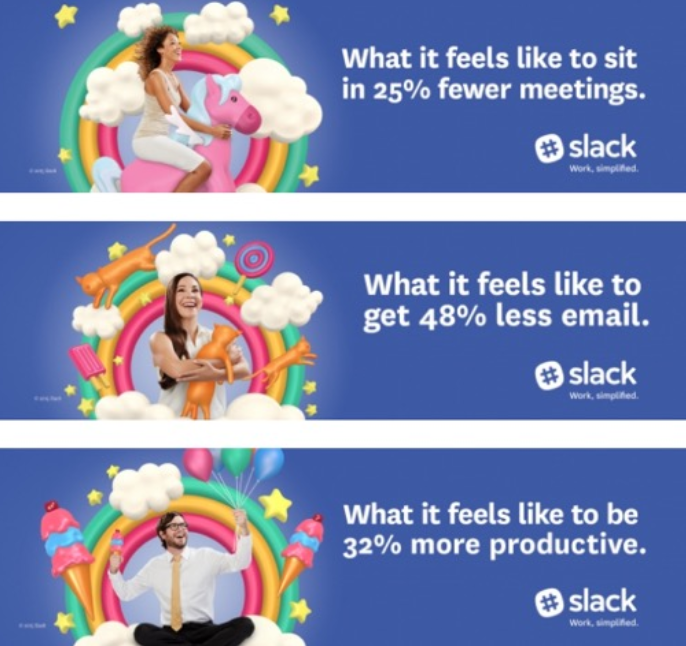
Moreover, the Euphoria campaign showcases the product’s actual benefits in a unique and fun way.
This shows that there is a reason for this positive trend. Humor sells.
All in all, keep your humor simple for maximum outreach and impact. Make sure you are aware of your audience and what kind of humor might attract them before posting content. This is key in carrying out the right kind of humor. Also, try to keep your content up to date with pop culture, current events and holidays, so your brand is seen as relevant.
Humor can be a difficult thing to accomplish. But, with the right use of humor on social media can make a difference for you and your brand.
7. Curate Others’ Content
Let’s be honest – coming up with new content to keep your social media followers engaged is not an easy task. And the ability to feed your audience with content is more important than ever before.
Those that use social media for B2B, agree on the importance of content curation. But brands have begun to realize that creating original content is hard. On the other hand, content curation has many perks, including the ability to establish a connection with your audience.
Content curation helps shift the stress of blogging or writing articles. Once you have access to a great piece of content, it can become easy to write a brief caption. It gives you a new post of original content, built on top of an idea that will be appealing to others.
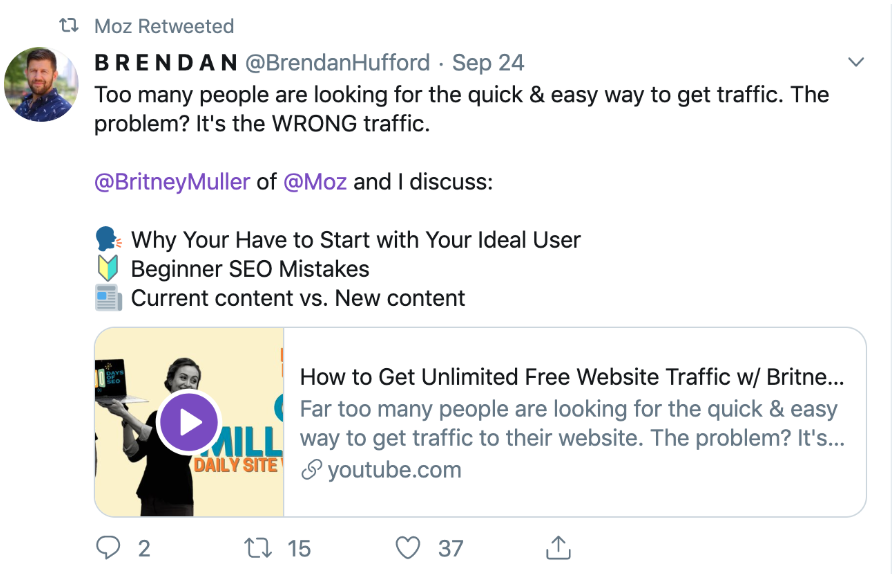
With the high competition fighting for exposure in the News Feed, it’s critical to get your brand noticed. And what better way to attract attention, than by sharing content that appeals to your audience without having to create something from scratch?
The most basic form of content curation is a retweet, allowing you not to have to come up with every tweet on your own consistently. By retweeting others, you’re choosing information that is branded as your own, but built on the ideas of those you follow.
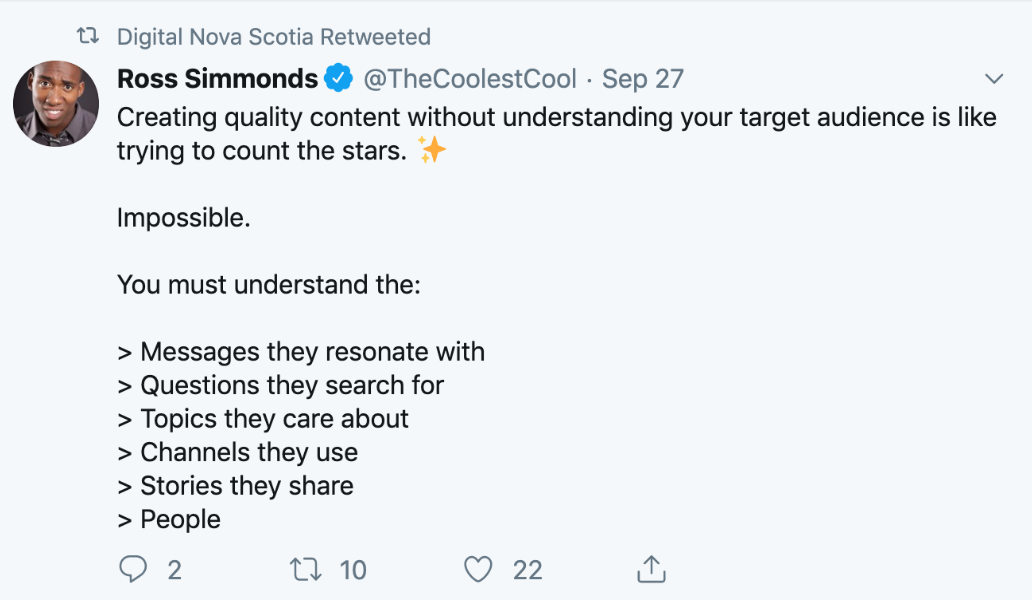
So, begin curating content for your social media channels. It will bring more to your audience and will help boost engagement.
When you’re looking for content, whether it’s reading or sharing it, you will develop an eye for the current state of your industry. And it will also enable you to spot what is missing in other’s content, which can help you fix it with your own content.
In the end, content curation makes your social media efforts easier. And it has the potential to grow your brand and engagement based on the content you don’t necessarily need to create yourself.
8. Use Hashtags
In case you hadn’t noticed, the hashtag has taken over the world of social media.
Who can forget that time where we all dumped ice over each other to raise money for ALS? The #IceBucketChallenge was a successful social media campaign. The big reason the #IceBucketChallenge was popular because people love to post content of themselves doing good on social media and the challenge resulted in positive results.
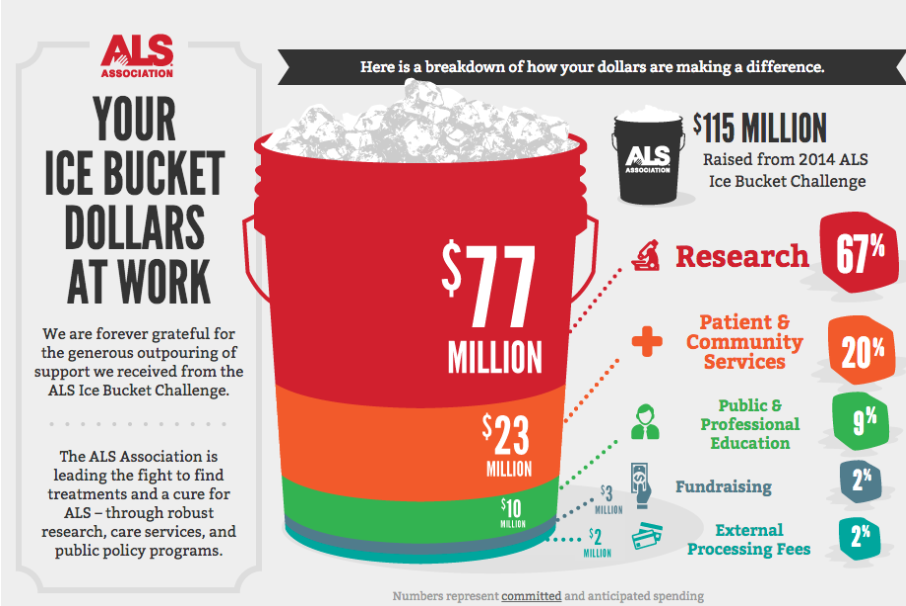
When it comes to promoting your brand on social media, hashtags are key to reaching success. And the hashtag is a tactic to make your content discoverable.

Hashtags were initially used across Twitter, but have become standard on other platforms including Facebook, Instagram and LinkedIn. Accomplishing the use of the hashtag allows you to engage your audience and increase your following at no cost.
When used correctly, hashtags can help people that are interested in your topic and/or industry find what you are creating and help to expand your following and brand.
Twitter has found that brands that use hashtags can see a 50 percent increase in engagement compared to those who do not.
In fact, tweets with one or two hashtags have 21% more engagement than those with three or more. And those that use more than two hashtags have a 17% drop in engagement.
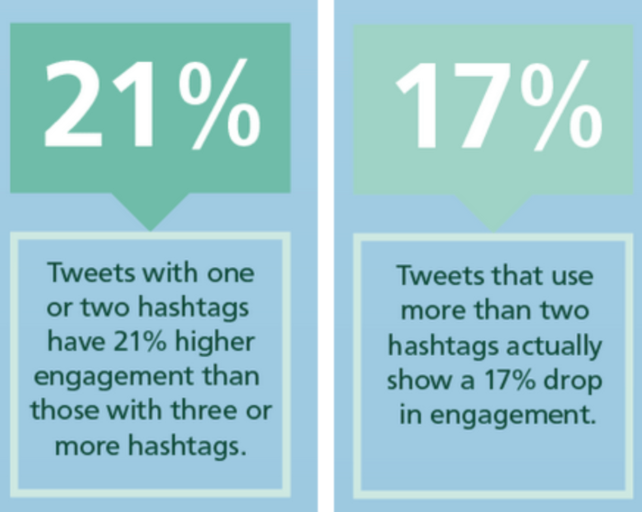
While it sounds easy just to place a hashtag in front of a message, there are a few things that are important to know when you are looking to be found by them:
- Keep hashtags memorable and straightforward than trying to use a whole bunch of words in one tag.
- Don’t force a hashtag into every post. Use them when they can add value and are likely to cause interaction.
Select specific hashtags whenever possible, as the more specific you can get, the better chance you are to attract your targeted audience. And capital letters at the start of each word, can help clarify what you message is.
Your competition is also probably leveraging hashtags in their social media plan. How great are they at engaging their audience? You will want to pay attention to how much or little they are utilizing hashtags and what their engagement level is.
Join the revolution today and start sending the right message with the power of a hashtag!
9. Use Memes and GIFs
In a society when many skip advertisements as much they can, B2B marketing, with humor or pop culture, can help engage your audience.
However, B2B marketers are usually hesitant to use memes/GIFs in their content. The common thought with B2B marketers is that these are great for B2C, but not for them.
For example, Adobe made this GIF to highlight some of its popular products. This particular GIF is simple, yet appealing. And such tactics on social media not only promote some fun interactions that might create good relationships.

Though most of us are comfortable using memes or GIFs in our own lives, many brands are hesitant about using them in their marketing efforts.
For b2b marketers, the use of a meme or GIF can be an extremely low-cost way to create engaging content that attracts an audience.
Memes and GIFs can play off content that has been developed by others, so you do not need to create content. They save brands and marketers time that would be needed to produce original material.
Memes and GIFs are supposed to be hilarious. As they can have a satirical aspect, it can be challenging for your whole audience to understand. And if you think they could work, you need to think long and hard to make sure this approach will work.
SalesRight has a fresh look and enhanced features to end summer with a bang, including:
🥳 Facelift to the Pricing Guide List
🧾 Revamped Guide Calculator
🆕 New Guide Edit functionality
🤩 And more! pic.twitter.com/gPDa2RqoHC— Interactive Quotes by FastSpring (@fastspringIQ) August 21, 2019
In a report from WebSearchSocial, humor is one of the strongest ways for marketers to get customers to let down their guard with a business.
As memes and GIFs have become popular, more brands have begun using them to curate and grow engagement. The idea is to be authentic and not overly serious. Using edgy material shows that your company has a personality to set you apart from competitors.
Like many creative processes, you have to trust your gut and be confident. If you do not think a GIF or meme you created or found is funny or exciting, your audience probably won’t love it.
Use your judgment and know that the more GIFs and memes you consume, the better you will be at using them.
10. Respond to All Comments
To help boost engagement, you need to be social. When your audience sends you a message or leaves a comment, they are giving you a chance to talk to them.
Whether they leave a positive or negative comment, you should be answering it.
You can show kindness for the positives and suggest a solution for the negatives. You want to be proactive and responsive to all comments, especially the negative ones. But the only time you would not want to answer to a post is if somebody tags a friend, since they are not exactly talking to you.

When responding to others, you should present yourself as personable and approachable. You want to use comments as a chance to build a connection with them.
By presenting your company as helpful, others will feel a connection to you and your products and/or services. And adding in emojis can also help develop a connection with each respondent.
The negative ones are unavoidable, but if you quickly respond, you can stop most issues from growing. It’s a good idea to have a plan to deal with negative comments. Depending on the problem, you might want to reach out privately to provide further support or provide a comprehensive response.
Replying to comments on social media is an easy one. Thus, the importance of responding to comments cannot be overlooked. So if you promote your brand on social media, you need to be in control of your comments.
You can also consider making use of tools like Asana and Airtable to streamline communication with your entire team to ensure that all comments are addressed and your team responses stay on-brand.
Wrapping up
Brands that focus on growing their social media engagement can benefit from better marketing reach, ROI and higher brand awareness that makes it easier to reach prospects and customers.
Working to boost your engagement will be a hard and ongoing task.
You will need to spend some time understanding who your audience is and then spend time with them daily. Use insights to where your efforts are taking you. This will determine where you need to spend time on social media and what you need to do to increase engagement.
Social media will always be an ongoing conversation with your audience. You cannot be a good speaker if you are not focusing on what your customers are excited about!
Outlined above are 10 tips to help grow a brand’s engagement and enable you to accomplish more with your business. Social media is not going to update itself to the needs of people and the competitive market space. You have got to put in the time and effort, if you want to be successful on social media.
I’m also sharing our distribution playbook that gives you all tips and tricks to get the most out of your content. Go ahead—check out DREAM and start getting more traffic, reach and ROI.
Do you have any ideas on how to increase social media engagement? Share them with us in the comments below!








